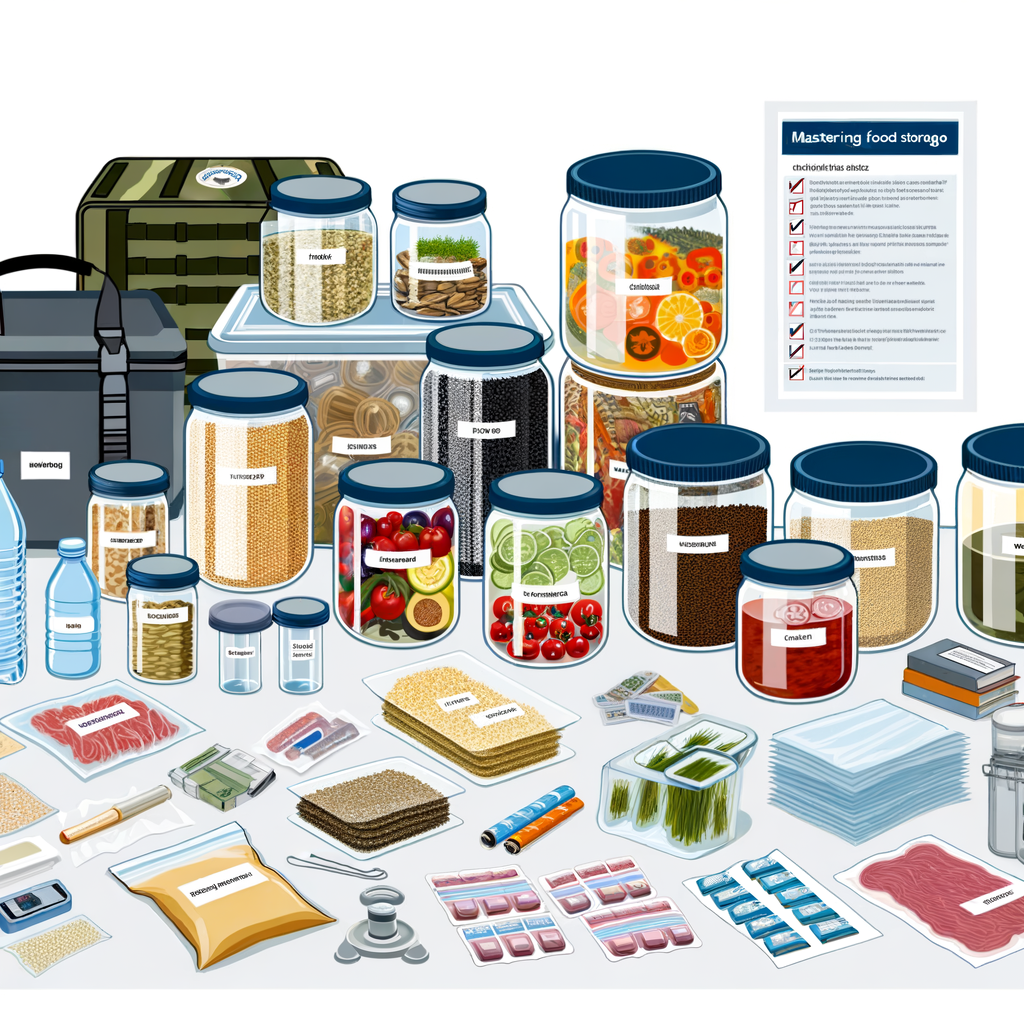
- July 16, 2024
- 12:43 am
- No Comments
In a world that’s increasingly unpredictable, having a reliable food storage system can be a lifesaver, quite literally. Whether it’s for an emergency, a natural disaster, or simply to avoid frequent grocery trips, mastering long-term food storage is a skill worth cultivating. Dive into this cheerful guide as we uncover the secrets to perfect food storage, help you build an ultimate survival pantry, introduce long-lasting foods that will tantalize your taste buds, and guide you in creating a go-to emergency survival kit.
Unleashing the Secrets to Perfect Food Storage
Imagine your pantry as a time capsule, preserving the deliciousness of today for the uncertainties of tomorrow. The first secret to perfect food storage is understanding the importance of the environment. Cool, dark, and dry places are your best friends when it comes to storing food for the long haul. Temperatures between 50-70°F (10-21°C) are ideal to prevent spoilage and maintain the nutritional value of your stored goodies.
Next up, let’s talk about containers. Not all storage containers are created equal. Opt for airtight containers to keep out moisture and unwanted pests. Mason jars, vacuum-sealed bags, and food-grade buckets with tight lids are fantastic options. For those looking to go the extra mile, consider using oxygen absorbers and silica gel packets to further prolong the shelf life of your stored items.
Labeling is the unsung hero of the perfect food storage system. Clearly label each container with the contents and date of storage. This not only helps you keep track of what you have but also ensures you rotate your stock effectively, using the oldest items first. Additionally, keeping an inventory list can save you from the dreaded "I thought I had more of this!" moments.
Building Your Ultimate Survival Pantry
Creating the ultimate survival pantry is akin to building a culinary fortress ready to withstand any storm. Begin by assessing your storage space and its capabilities. Shelves, stackable bins, and even under-the-bed storage can be utilized to maximize available space. Remember, every nook and cranny can be a potential storage goldmine!
When stocking your pantry, focus on a balanced variety of foods that provide essential nutrients. Think grains, legumes, canned vegetables, and fruits. Don’t forget the protein—canned meats, jerky, and protein powder are great choices. Including a mix of dried herbs and spices will not only preserve flavor but also add a touch of comfort to your meals during stressful times.
The ultimate survival pantry is incomplete without a selection of comfort foods. Chocolate, instant coffee, and even a bottle of your favorite hot sauce can lift spirits when times are tough. These small indulgences can make a big difference in maintaining morale. Remember, a happy pantry is a well-rounded pantry, catering to both your nutritional needs and emotional well-being.
Long-Lasting Foods That’ll Wow Your Taste Buds
Who says long-term food storage has to be bland? There are plenty of long-lasting foods that can tantalize your taste buds. Honey, for instance, is a natural sweetener that never spoils. Its rich, golden hue and decadent sweetness can add a touch of luxury to any dish. Plus, it has antibacterial properties, making it a double win!
Dehydrated fruits and vegetables are pantry powerhouses. Apples, bananas, and bell peppers, when properly dried and stored, can last for years. They not only retain their nutritional value but also pack a flavorful punch. Rehydrating them for soups, stews, or snacking straight out of the bag can bring bursts of flavor to your meals.
Grains like quinoa, rice, and oats are staples that are both versatile and long-lasting. Quinoa, with its nutty flavor and high protein content, can be the star of many dishes. Rice and oats, being the ultimate comfort foods, can turn any mealtime into a delight. Experiment with different recipes to keep your palate excited and your meals enjoyable.
Creating Your Go-To Emergency Survival Kit
An emergency survival kit is your lifeline in dire situations, and food is a crucial part of it. Start with the basics: a three-day supply of non-perishable food and water for each person in your household. Think about high-energy foods like granola bars, dried fruits, nuts, and canned goods that are easy to consume without cooking.
Portability is key for your survival kit. Use a sturdy, easy-to-carry backpack to store your supplies. Include utensils like a can opener, disposable cutlery, and a small portable stove or heating source. Don’t forget multi-purpose items like aluminum foil, which can serve as a cooking surface, cover, or even an emergency heat reflector.
Lastly, personalize your kit to meet your specific needs. Dietary restrictions, allergies, and preferences should all be considered. Including vitamins can help maintain nutritional balance. A small first aid kit and basic hygiene supplies can also make a world of difference. Regularly check and update your kit to ensure everything is in good condition and replace any expired items.
Mastering long-term food storage is not just about survival; it’s about thriving in any situation that comes your way. By understanding the secrets of food storage, building an ultimate survival pantry, stocking up on delicious long-lasting foods, and creating a go-to emergency survival kit, you’re setting yourself up for success. Embrace the process with a cheerful spirit, and remember that preparation today ensures peace of mind tomorrow. Happy storing!